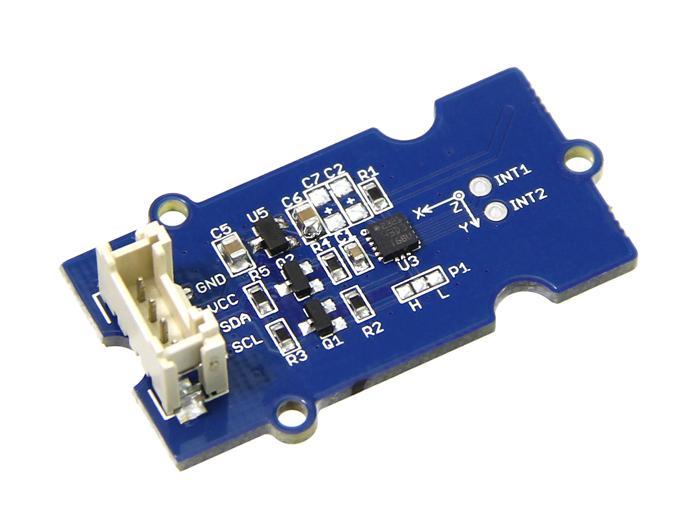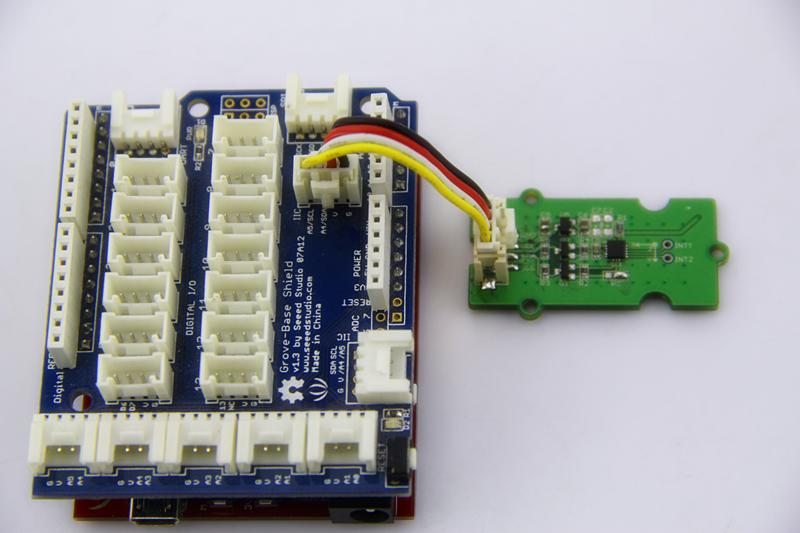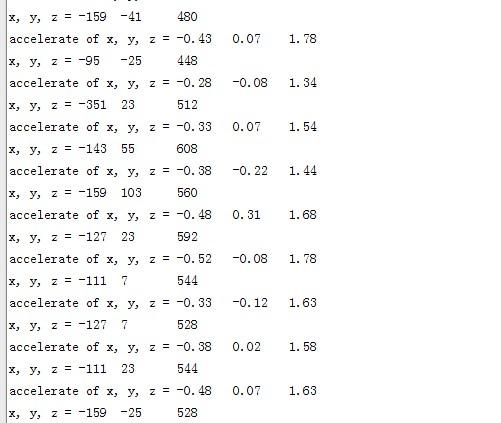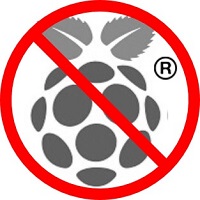Grove - 3-Axis Digital Accelerometer(±400g)
Introduction

The H3LIS331DL is a low power high performance 3-axis linear accelerometer belonging to the “nano” family, with digital I2C serial interface standard output. The device features ultra low power operational modes that allow advanced power saving and smart sleep to wake-up functions. The H3LIS331DL has dynamically user selectable full scales of ±100g/±200 g/±400 g and it is capable of measuring accelerations with output data rates from 0.5 Hz to 1 kHz.
Features
- Wide power range DC3.3V to 5V
- Grove outline
- 3 axis sensing
- Small, low-profile package: 3×3×1mm TFLGA
- Low power 300µA at 3.3V (typical)
- ±100g /±200 g /±400 g dynamically selectable full scale
- I2C digital output interface
- 10000 g high shock survivability
- ECOPACK®RoHS and “Green” compliant
Tip
More details about Grove modules please refer to Grove System
Application Ideas
- Shock detector
- Impact recognition and logging
- Concussion detection
Platforms Supported
Usage
Here below we show you how to read the raw data from this accelerometer.
-
Plug it onto the I2C port of your Grove - Base Shield.

-
Download the Digital Accelerometer(±400g) Library and unpack it into arduino-1.0\libraries in your Arduino installation folder.
-
Open the demo code directly by the path:File -> Example ->Grove_3Axis_Digital_Accelerometer_H3LIS331DL->H3LIS331DL_AdjVal. It is a sketch to adjust the raw data of H3LIS331DL to make it more precise.
-
Upload the code and open the serial monitor.
-
Open the serial monitor to get the adjust value of reference as the steps described in serial output.

-
Open the demo code directly by the path:File -> Example ->Grove_3Axis_Digital_Accelerometer_H3LIS331DL->H3LIS331DL_Demo. Then modify the VAL_X_AXIS/VAL_Y_AXIS/VAL_Z_AXIS according to what you get from H3LIS331DL_AdjVal Sketch.

-
Upload the code and open the serial monitor and open the serial monitor to check the result.

Resources
- Grove - 3-Axis Digital Accelerometer(±400g) Eagle File
- github repository for 3-Axis Digital Accelerometer(±400g)
- H3LIS331DL Datasheet PDF
| Arduino | Wio | BeagleBone | Raspberry Pi | LinkIt ONE |
|---|---|---|---|---|
 |
 |
 |
 |
 |
Caution
The platforms mentioned above as supported is/are an indication of the module's hardware or theoritical compatibility. We only provide software library or code examples for Arduino platform in most cases. It is not possible to provide software library / demo code for all possible MCU platforms. Hence, users have to write their own software library.
Help us make it better
Welcome to the new documentation system of Seeed Studio. We have made a lot of progress comparing to the old wiki system and will continue to improve it to make it more user friendly and helpful. The improvement can't be done without your kindly feedback. If you have any suggestions or findings, you are most welcome to submit the amended version as our contributor via Github or give us suggestions in the survey below, it would be more appreciated if you could leave your email so that we can reply to you. Happy Hacking!

